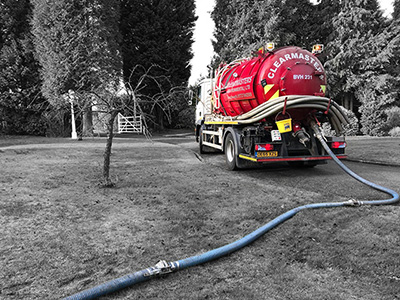In an ideal world, all your drainage would be installed in a way in which gravity can work its magic and transfer all your waste to the main sewer. This is not always possible for a variety of reasons, and this is where pump stations come in.
Pump stations work as a holding tank or chamber, which will fill to a predetermined capacity before engaging a pump (or pumps) to discharge the liquid with enough force to send it on its way, usually to the mains or at least to a point where gravity can take over.
You could have 1 or 2 pump stations, if you have 2 it would most likely be one for stormwater and one for household waste.
The size of a pump chamber is determined by the total number of properties and their sizes connected to it. Usually, this is calculated by simply adding up the total number of bedrooms. This gives you a general idea of how many people will likely, or potentially could be creating waste. You would then work out a maximum daily discharge and make sure your pump chamber can store at least 24 hours’ worth of waste. This gives you a bit of breathing space in the case of a power cut or pump failure for example.
A fully working pump station is a joy, a failed one…. Not so much. Although your pumps are perfectly designed to transfer the liquids and to a degree (pump dependant!) some of the solids in the pump chamber they are not designed to pump away a lot of what can make it in. larger solids, clumps of tissue paper, little scuba man figures your 3 year old decides to test in your toilet, all these things and more will inevitably find their way into your drainage and need to be removed before they cause blockages or even worse complete failure of your pump(s).
Replacing these pumps can be very costly, not only the outlay for the physical pump but your waste still needs to be dealt with whilst repairs are going on. Daily visits from a vacuum tanker start to build up costs quickly.
This can all be avoided by educating yourselves and your family/guests on what should be getting flushed and regular emptying and servicing of the mechanical parts of your pump chamber.
Don’t panic, call us straight away and we will investigate. Do not attempt to run any pumps manually or adjust anything on the control panel. Unless it has an audible alarm, you can mute that for your own sanity! We are available 24/7 365 days of the year.
The golden rules of what to flush down your toilet

Quite simply, we are the best!
We are always on hand, whether it be a routine visit, or an emergency call out to offer you the very best in cesspit emptying. We pride ourselves on having a modern fleet of vehicles containing the highest tech equipment to ensure that we can provide you with the high levels of reliability and efficiency that we constantly achieve.
Our friendly and knowledgeable office team, are always available to discuss or advise on any of your cesspit requirements or simply to schedule in your cesspit emptying at a convenient time and date that suits you.
On site, our team of dedicated, friendly and fully trained engineers will ensure that your emptying is carried out to the highest standard with minimal disruption. Our engineers are always willing and fully encouraged to spend time answering any questions you may have regarding your sewage system.
Don't fancy opening the lid and taking a look? We don't blame you! Slow drains, nasty odours and gurgling pipes are the most common signs. We can check if your not sure.
Your drains will stop flowing and back up, eventually it will overflow and make a mess of your garden and damage the surrounding environment.
You need to think about the capacity of the tank, maybe a good time to look at having a septic tank or treatment plant installed whist you're at it.
A sign of this will be pooling water, ground dipping and the grass around the cesspit growing faster than the rest. In this scenario its best to get our team out to inspect/repair.
This depends on the land/space you have but, in most cases, yes! Outlaying for a lower maintenance system could save you a lot in the long run!
You don't need to register your cesspit. That said, if you plan to install a new one you will need planning permission and building regulations approval.